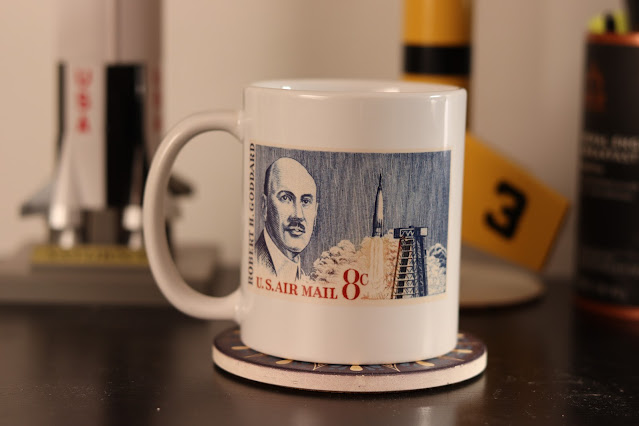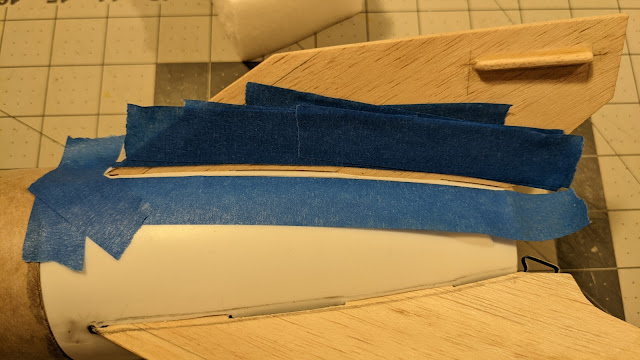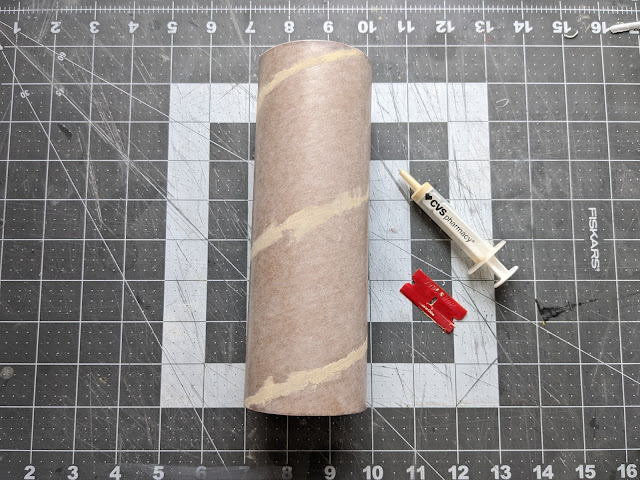Fins are on the V2, and it's looking good!
Wood glue worked. Even the fin with the slight gap between the tab root and the motor tube is attached - but only just. There is a bit of wiggle. The forward tab is probably not attached at all. Due to the way the rocket is constructed, there are gaps between the fin root and the boat tail.
Both of these issues will be taken care of by adding a good fillet to the fin roots. Instructions don't mention fillets, but there's good reason for them. The V-2 missile had significant fairings at the bases of their fins, so it makes sense from a scale modeling standpoint.
 |
| From Wikimedia Commons. Photo Credit: Jan B.H.A. Vervloedt (photo) Ad Meskens (scan) |
For most low and mid power rockets, I prefer simple glue fillets. But here, because of the plastic, the significant gaps, and the weak fin attachment, I'll opt for epoxy fillets. This will also allow for larger radius fillets, for the look.
My original thought was to go with one of two choices - Bob Smith 30 minute epoxy thickened with microballoons, or some kind of epoxy clay.
I already have microballoons on hand. I've used them before with good results. Microballoons make epoxy lighter, but thicker and less prone to sagging while it cures. It's easier to sand if needed.
The downside is that adding microballoons to epoxy makes it brittle. I have one rocket with cracks in its beautiful fillets, even though it's never had a terribly hard landing, because of the microballoons. (They're made of silica glass, so they make epoxy much more glass-like.) And though it's less prone to sagging than straight epoxy, this mixture can still run a little as it cures. Since these fillets will be on the boat tail, I'd probably need to keep a close eye on them for at least 15-20 minutes to make sure they aren't pooling on the tail end, or running off. And, of course, epoxy is messy.
Epoxy clay seems easy to shape and work with. It is apparently sandable when it cures. It won't sag or run.
But, I don't have any, I've never worked with it, and it's dense, so it'll add some tail weight. Since I trimmed the fins, I need to shift the CG forward. Extra weight in the fillets means extra weight in the nose, and if I add too much I'll need more powerful motors for a decent flight.
Apogee Components sells a product called Fixit Epoxy Clay. There are others as well. But since I've never used it before, I would have to spend the money to try it out - and what if I didn't like it?
A follower on Instagram gave me a suggestion, and after mulling it over for a bit, I decided to try it. That's coming up in the next post.
Like my Facebook page for blog updates and extra stuff.Have a question you'd like to see addressed on this blog? Email me at iamtherocketn00b@gmail.com.

















